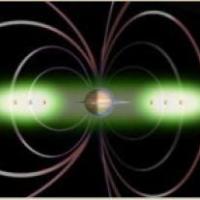Physics and Astronomy Space Plasma Seminar
Jerry Goldstein, Staff Scientist, Space Science Department, Southwest Research Institute
Title: "Modeling the Plasmasphere of Saturn"
Abstract: In this comparative magnetospheric physics talk, we apply the terrestrial "shielding" paradigm to the Saturnian system. We show how coupling between the ring current and ionosphere can generate global structure in the cold, dense plasma of Saturn's E-ring torus, i.e., its plasmasphere.
Unlike at Earth, Saturn's magnetosphere is driven internally, by the combination of rapid rotation and a strong internal plasma source that originates in H2O geysers on the southern pole of the moon Enceladus. The internal driving mechanism is the centrifugal interchange instability, in which cold, dense plasma is flung outward and replaced by inward-moving injections of hotter, less dense plasma. Interchange theory favors more rapid growth of "high-m" modes (i.e., modes with a large azimuthal wavenumber), yet observations clearly show a persistent m=1 density mode that rotates at or near the planetary rotation frequency.
To explain these observations, several authors have postulated a global, rotating, two-cell (m=1) convection pattern. Our results suggest one possible means of generating such a rotating, m=1 mode is via an asymmetric ring current (RC) pressure, coupled to Saturn's ionosphere.
We use an analytical model of magnetosphere-ionosphere coupling to show that an asymmetric RC pressure with an m=1 longitudinal dependence can initiate a rotating two-cell interchange potential. The model extends prior similar work by considering both cold plasma interchange and warm plasma pressure. This model predicts that within 7 h the magnitude of the interchange potential equals the RC seed potential. Within 13 to 26 h, the model reproduces the degree of cold density nonaxisymmetry at the outer density gradient of the Enceladus plume, as observed by the Cassini Plasma Spectrometer. The interchange growth time bears a strong dependence on the particular value of height-integrated ionospheric conductivity and a weaker dependence on the magnitude of the initial RC perturbation. The model also extends prior work by including an outer boundary. We discuss the qualitative effect of a realistically shaped magnetopause that is anchored to the nonrotating frame. For high-m interchange, the magnetopause presence has no significant effect. In contrast, low-m interchange modes experience a rotating, asymmetric boundary condition that alternately enhances and inhibits interchange growth each rotation period. Our model predicts that the two-cell interchange potential should be long-lived and relatively insensitive to subsequent ring current injections, because after two Saturnian rotations the interchange potential is an order of magnitude larger than the seed potential that initiated it.
